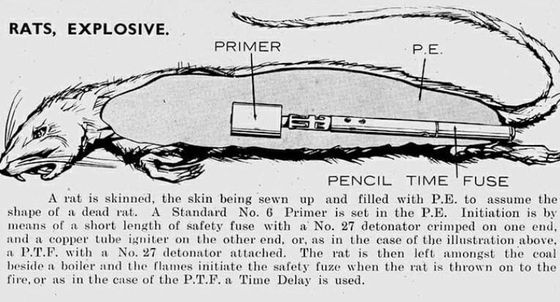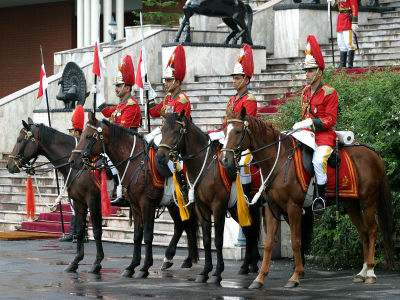An international security expert explains the success and failure of espionage using animals, such as 'taking pictures with a camera installed in a pigeon'

Attempts to attach cameras to animals to spy on them in order to obtain information by eavesdropping or eavesdropping on heavily guarded areas have been carried out for a long time, mainly by the former Soviet Union and the Central Intelligence Agency (CIA). Stephen Wolff, a professor of international security at the University of Birmingham in the UK, explains the history of animal espionage, as well as successes and failures.
The world's most bizarre secret weapons: how pigeons, cats, whales and even robotic catfish have acted as spies through the ages

In September 2024, the carcass of the famous beluga whale 'Hvaldimir' was discovered. Hvaldimir is a combination of the Norwegian word for whale 'hval' and Russian President Vladimir Putin 's 'Vladimir'. When it was discovered in 2019, rumors spread that it was a spy dolphin trained by Russia.
Famous 'Russian spy dolphin' found dead - GIGAZINE

Moscow has not commented officially on whether Valdemir was used for espionage, but Wolf said the Soviet Union had a history of running programs to train marine animals as spies and assassins, including dolphins and beluga whales.
The CIA has experimented with similar espionage using animals. One well-known example is the 1960s spy program ' Acoustic Kitty ,' which used cats. In Acoustic Kitty, the cats were surgically fitted with microphones in their ears, radios in the lower part of their skulls, and antennas in their fur, and were trained to play near foreign officials. However, the program was thwarted when the cats wandered into the road and were hit by a taxi. A memo on the operation at the time stated, 'Final examination of the trained cats has convinced us that the program is of no practical use for our highly specialized needs. The problem is that cats are not particularly easy to train.'

Pigeons are known as a successful example of animal spying. In 2019, the CIA revealed that they had used pigeons to spy on the Soviet Union during the Cold War. Equipped with a small camera, pigeons can access restricted areas from the air, take photos, and return to their nests from hundreds of kilometers away due to their excellent homing instincts. According to
One of the animal-based operations carried out by the British Secret Service during World War II was the 'Exploding Rats.' The idea was to stuff plastic explosives into dead rats and place them in the boiler rooms of German factories. When factory workers found the dead rats, they would throw them into the boiler, causing a huge explosion. However, the Germans discovered the plan and confiscated about 100 dead rats, so the operation was unsuccessful. However, the Germans became suspicious of the rats after receiving the plan and wasted a huge amount of resources, so it is said that 'the trouble caused by the leaking of the plan was a much bigger success than if the explosive rats had actually been used.'

In modern times, drones are often used as a means of collecting information. At the 33rd Summer Olympic Games in 2024 (Paris Olympics 2024), there was a case where a drone was used to spy on the enemy team , which became a hot topic. While animal spies are highly stealthy and ambush-worthy, they also have the unpredictable side unique to animals, such as Acoustic Kitty, so instead, they are looking for ways to approach targets with drones that imitate animals. In 1970, the CIA developed airplanes that imitated birds and insects, which are said to be the forerunners of today's drones. In the 1990s, the CIA also released a robot catfish called 'Charlie' as a successfully operated underwater drone. Below is a movie about Charlie released by the CIA.
The Debrief: Behind the Artifact - Charlie the Fish - YouTube
'There have been many examples of animal spies in the past, some successful, some unsuccessful, and some that failed but had great benefits,' Wolf said. 'One tragic example is when the British Secret Intelligence Service (MI6) tried to eavesdrop on Russian spies by placing fake rocks containing radio signals, only to be exposed by a group of suits gathered nearby. While big research budgets and promising technological advances can give you an advantage in certain situations, sometimes the most effective spy techniques rely on quick thinking and bold, fearless human action.'
Related Posts:
in Creature, Posted by log1e_dh







